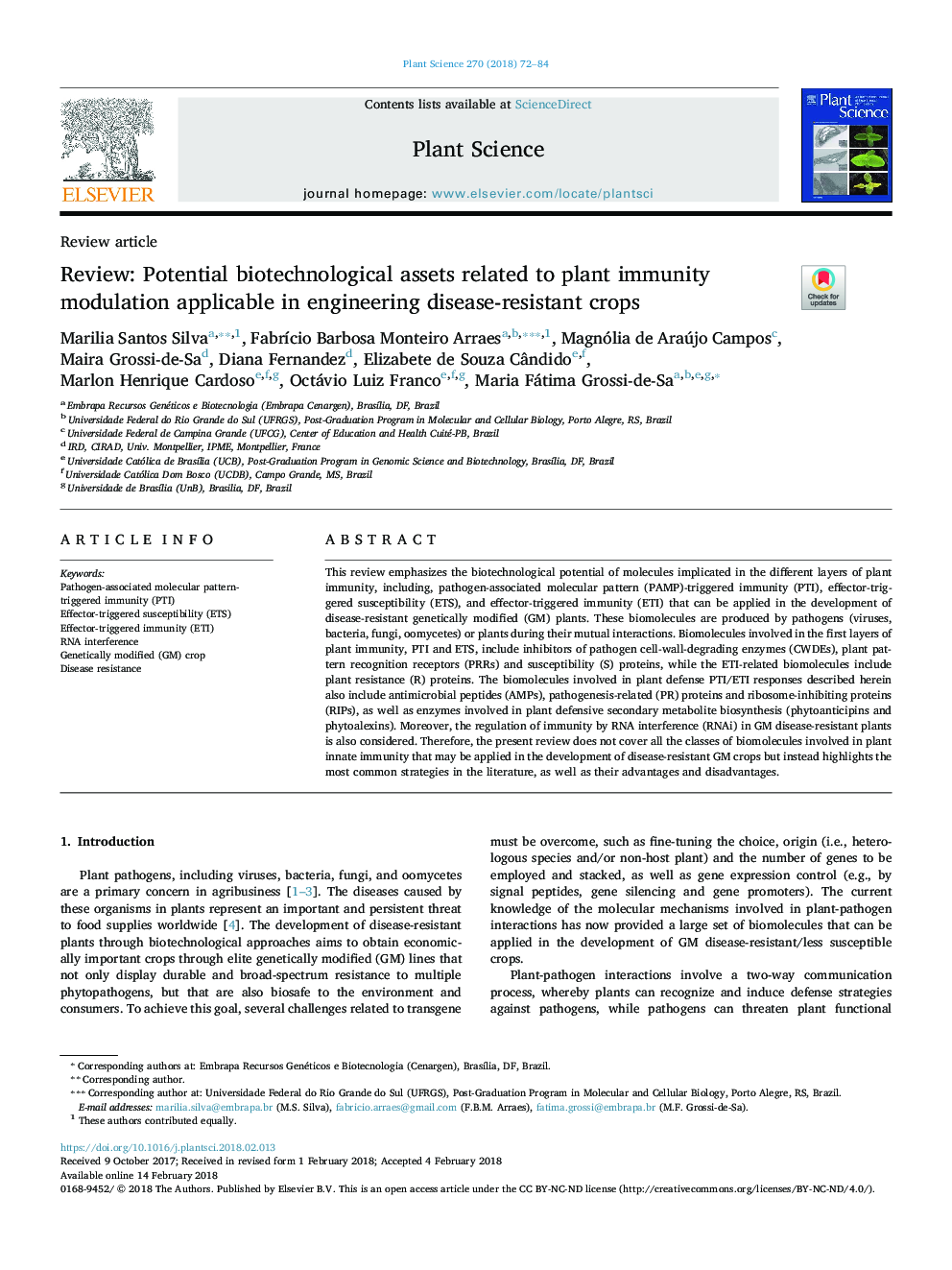| Article ID | Journal | Published Year | Pages | File Type |
|---|---|---|---|---|
| 8356542 | Plant Science | 2018 | 13 Pages |
Abstract
This review emphasizes the biotechnological potential of molecules implicated in the different layers of plant immunity, including, pathogen-associated molecular pattern (PAMP)-triggered immunity (PTI), effector-triggered susceptibility (ETS), and effector-triggered immunity (ETI) that can be applied in the development of disease-resistant genetically modified (GM) plants. These biomolecules are produced by pathogens (viruses, bacteria, fungi, oomycetes) or plants during their mutual interactions. Biomolecules involved in the first layers of plant immunity, PTI and ETS, include inhibitors of pathogen cell-wall-degrading enzymes (CWDEs), plant pattern recognition receptors (PRRs) and susceptibility (S) proteins, while the ETI-related biomolecules include plant resistance (R) proteins. The biomolecules involved in plant defense PTI/ETI responses described herein also include antimicrobial peptides (AMPs), pathogenesis-related (PR) proteins and ribosome-inhibiting proteins (RIPs), as well as enzymes involved in plant defensive secondary metabolite biosynthesis (phytoanticipins and phytoalexins). Moreover, the regulation of immunity by RNA interference (RNAi) in GM disease-resistant plants is also considered. Therefore, the present review does not cover all the classes of biomolecules involved in plant innate immunity that may be applied in the development of disease-resistant GM crops but instead highlights the most common strategies in the literature, as well as their advantages and disadvantages.
Keywords
Related Topics
Life Sciences
Agricultural and Biological Sciences
Plant Science
Authors
Marilia Santos Silva, FabrÃcio Barbosa Monteiro Arraes, Magnólia de Araújo Campos, Maira Grossi-de-Sa, Diana Fernandez, Elizabete de Souza Cândido, Marlon Henrique Cardoso, Octávio Luiz Franco, Maria Fátima Grossi-de-Sa,
